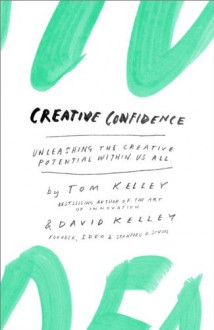
The authors Tom and David Kelley work together at the Stanford design school, where they help both people and companies to think creatively. In Creative Confidence, they share their personal experiences with many clients as well as some of the exercises they use to help students improve their creativity. They are strong believers that everyone is creative and can learn to access their innate creativity.
Given the description, I was hopeful that this book would contain advice that would help me come up with more creative research ideas. I was disappointed to find that much of their advice seemed like it would be more helpful to someone in a business or design position than to someone doing research. While some of their exercises could be modified or extrapolated from, I found little to be applicable directly. For instance, many of their suggestions center on trying something, anything just to get started and then refining. This could potentially work for me during the idea generation phase but is really awful advice for starting a research project (a far better approach would involve a lot of pre-planning).
In addition to not being personally applicable, I had a few other problems with the book. Almost all of the book was centered on personal stories and anecdotes. Research supporting their advice was hardly ever mentioned. Each chapter was supposed to focus on one step on the path to becoming more creative, but there were so many anecdotes that seemed unrelated to the overall theme that I often lost track of the point of a given chapter. They were a bit short on specific advice too. There was one chapter that had perhaps ten ideas for getting started, but many of these required a group to implement them. Finally, at times I felt the authors were simply advertising their design school. The name of the school was mentioned on nearly every page and I felt the authors relied heavily on buzz words to describe their work.
That said, I don’t think I’m the target audience of this book. The specific examples of innovation and design might be more inspiring or even directly useful to people in other fields. The writing was clear and easy to follow. The choice to gather all of their advice into specific activities in one chapter could make this a great reference book. I was incredibly impressed by how well my ARC ebook was formatted already as well, so if you think this could be useful to you, don’t hesitate to buy it in that format. Hopefully someone in business or design will be better able to use this book.
This review first published on Doing Dewey.

 Log in with Facebook
Log in with Facebook 










